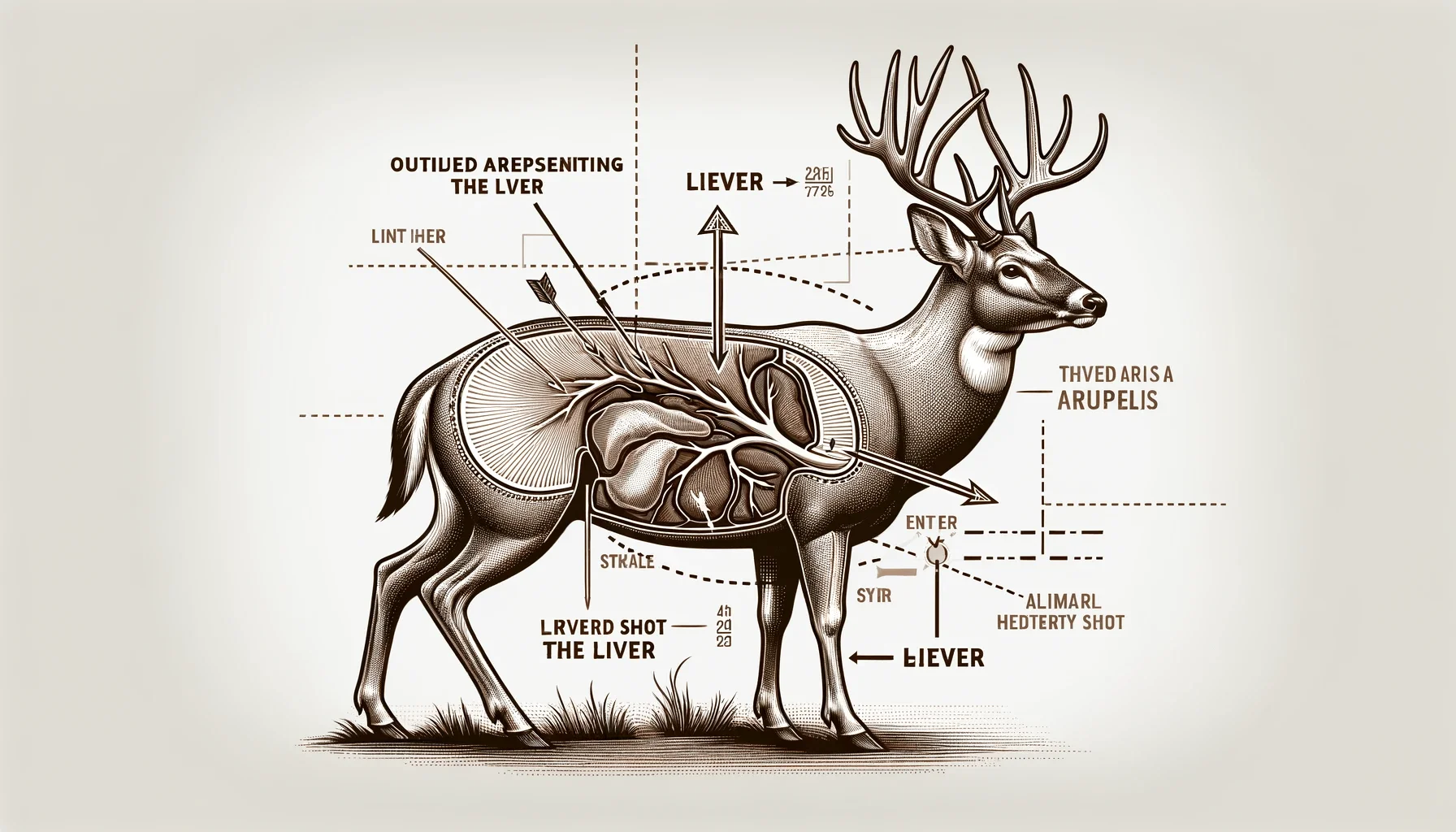
Table of Contents
Hello fellow hunters! Today, we’re diving into a scenario that’s both challenging and critical in the hunting world: dealing with a liver shot on a deer. While a liver shot isn’t the most ideal scenario, understanding how to handle it ethically and effectively is crucial for every responsible hunter. Let’s unravel the complexities together and ensure you’re equipped for this situation.
Before we get into the nitty-gritty, let’s clarify what a liver shot is. When hunting, a liver shot occurs when your arrow or bullet strikes the deer’s liver. Unlike a heart or lung shot, which are immediately incapacitating, a liver shot is not instantly fatal, but it is lethal.
Visual cues: The first step in identifying a liver shot is through observation. Look for specific signs in the deer’s reaction and the arrow or bullet entry point.
Blood trail: The color and consistency of the blood can offer clues. Liver shot blood trails are typically dark red and may be thicker than blood from a lung or heart shot.
After suspecting a liver shot, patience is paramount. Unlike heart or lung shots, where quick tracking is often beneficial, liver shots require a different approach.
How long to wait: It’s recommended to wait at least 6-12 hours before tracking a liver-shot deer. This waiting period is crucial to avoid pushing the deer further, making recovery more challenging.
Preparation for tracking: Use this waiting period to prepare for a potentially lengthy and challenging tracking job. Gather necessary supplies and inform any companions about the situation.
Understanding and interpreting the blood trail is a vital skill. The blood’s appearance can tell you much about the wound and how the deer is faring.
Discuss how terrain can affect the blood trail and tracking strategies. Offer tips for different types of landscapes.
Highlight the role of technology in tracking, such as using GPS devices or specialized hunting apps.
It’s crucial to approach this situation with respect for the animal. A liver shot, while not ideal, demands a responsible and ethical approach to ensure a humane end for the deer.
Discuss the importance of complying with local hunting laws and regulations during the tracking and harvesting process.
Once the deer is recovered, proper processing is essential. Discuss how to handle the deer to ensure meat quality and respect for the animal.
Reflect on the experience and what it teaches about shot placement, patience, and respect for wildlife.
Dealing with a liver shot on a deer is a challenging but important part of hunting. By understanding the signs, exercising patience, and following ethical tracking practices, you can ensure a humane and responsible harvest. Remember, every hunting experience is a learning opportunity. Stay safe, ethical, and respectful out there!
Answer: It’s recommended to wait at least 6-12 hours before beginning to track a deer that has been hit with a liver shot. This waiting period is crucial to prevent pushing the deer, which can make recovery more difficult.
Answer: A liver shot can often be identified by the blood trail’s characteristics. The blood tends to be darker red and thicker compared to a heart or lung shot. You might also notice it being more sporadic as the deer moves.
Answer: Yes, a liver shot is lethal to a deer. However, it is not immediately incapacitating like a heart or lung shot. The deer can live for several hours after a liver shot, which is why a longer tracking delay is recommended.
Answer: If you lose the blood trail, it’s important to remain patient and methodical. Circle back to the last known point of the trail and search in widening circles. Utilize any available technology, like GPS tracking, and consider environmental factors like wind direction and terrain.
Archery has evolved dramatically over thousands of years, yet one debate continues to spark curiosity…
When you’re setting up a long-range rifle scope, one of the most important decisions you’ll…
For many shooters, the objective lens size is one of the first things they look…
For decades, the 3–9×40 rifle scope has been one of the most iconic optics used…
Tuning a compound bow can feel intimidating, especially if you’re new to archery or don’t…
The world of compound bows is filled with innovation, craftsmanship, and brand loyalty. Among all…
This website uses cookies.